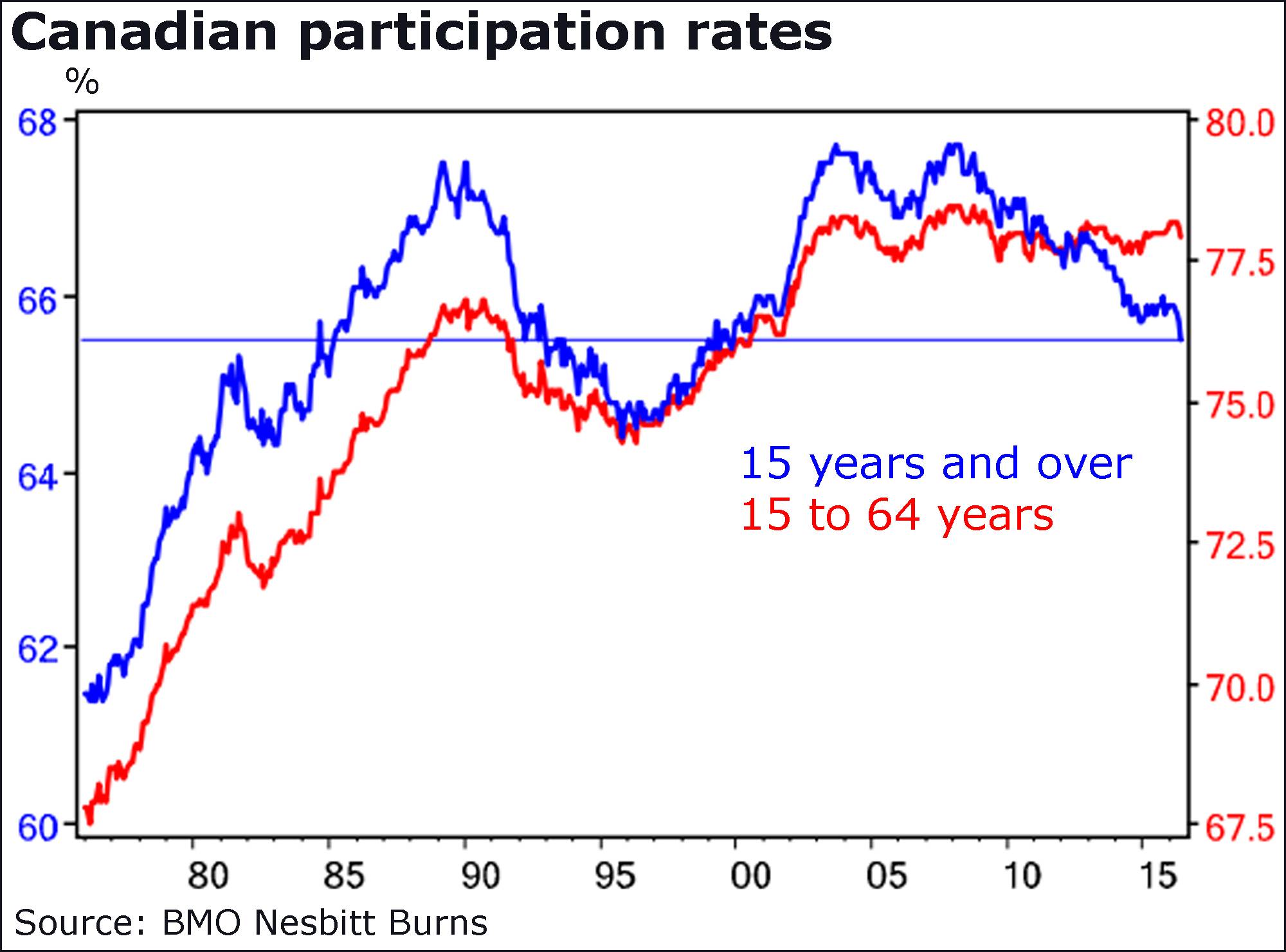Briefing highlights
- Economist sees 'permanent damage' to work force
- Global markets on the rise
- A Clement-O'Leary scene I'd love to see
- Video: Can you protect your job from robots?
‘Blue-collar blues’
The disappearance of so-called blue-collar jobs isn’t particularly new.
What is new, says Emanuella Enenajor, is that there aren’t many options for those thrown out of work this time around.
“Blue-collar jobs are on the decline, suggesting permanent damage to Canada’s labour force,” Ms. Enenajor, the North America economist at Bank of America Merrill Lynch, said in a recent report, citing the more than 40,000 jobs lost in June in the construction, manufacturing and natural resources industries.

Ms. Enenajor noted that the labour participation rate among men – that’s the number of both employed and job-seeking unemployed workers as a percentage of the population – has declined by 0.7 of a percentage point to 70 per cent in the last year.
That compares to a slight rise in the participation rate among women, “reflecting the damage to the male-dominated blue-collar sector.”
It’s different this time because “the alternatives for blue-collar work are limited,” Ms. Enenajor added in an interview.
Workers who lost their factory jobs in the 2000s, for example, could find new jobs in the “booming” energy or construction industries.
In reverse, those hit during the commodities troubles of the 1990s could shift to the factories.
“Today, the oil patch is firing, construction employment is near its saturation point, and factory jobs are flat,” Ms. Enenajor said in her report, titled “Blue-collar blues.”
“The result is a chronic atrophy of skills and employability of workers who are shut out of the labour force for extended periods.”

The overall participation rate has been declining noticeably, slipping to 65.5 per cent in June, noted BMO Nesbitt Burns chief economist Douglas Porter, which helps explain why the unemployment rate has also been easing even though job creation hasn’t been particularly fast.
Demographics are at play on that score, he added, given aging baby boomers.
While the participation rate has dropped across the population, it has held “remarkably steady” among those between the ages of 15 and 64, at about 78 per cent, in the last 15 years. For those 64 and up, it averaged only 13.4 per cent in 2015.
And thus, the low overall rate isn’t necessarily reflecting a sluggish economy.
“The steady decline reflects, instead, a demographic force - as the baby boom ages, a rising share of the adult population is gravitating into the 64-plus age category,” Mr. Porter said.
A scene I'd love to see ...

“At the rate the Conservatives are going, we'll be singing the blues for years.”
Stocks gain
Investors are still in a cheery mood this morning.
Markets are largely on the rise so far, with New York poised for another stronger open.
Tokyo’s Nikkei climbed 2.5 per cent, Hong Kong’s Hang Seng 1.7 per cent, and the Shanghai composite 1.8 per cent.
In Europe, London’s FTSE 100 was flat, while Germany’s DAX and the Paris CAC 40 were up by between 1.3 and 1.6 per cent. North American markets also rose.
“U.S. stocks look set for a higher open, with the S&P 500 expected to hit a new record intraday high, buoyed by a rise in oil prices, expectations of stimulus in Japan and the U.K., and Alcoa beating quarterly earnings expectations, said CMC Markets analyst Jasper Lawler.